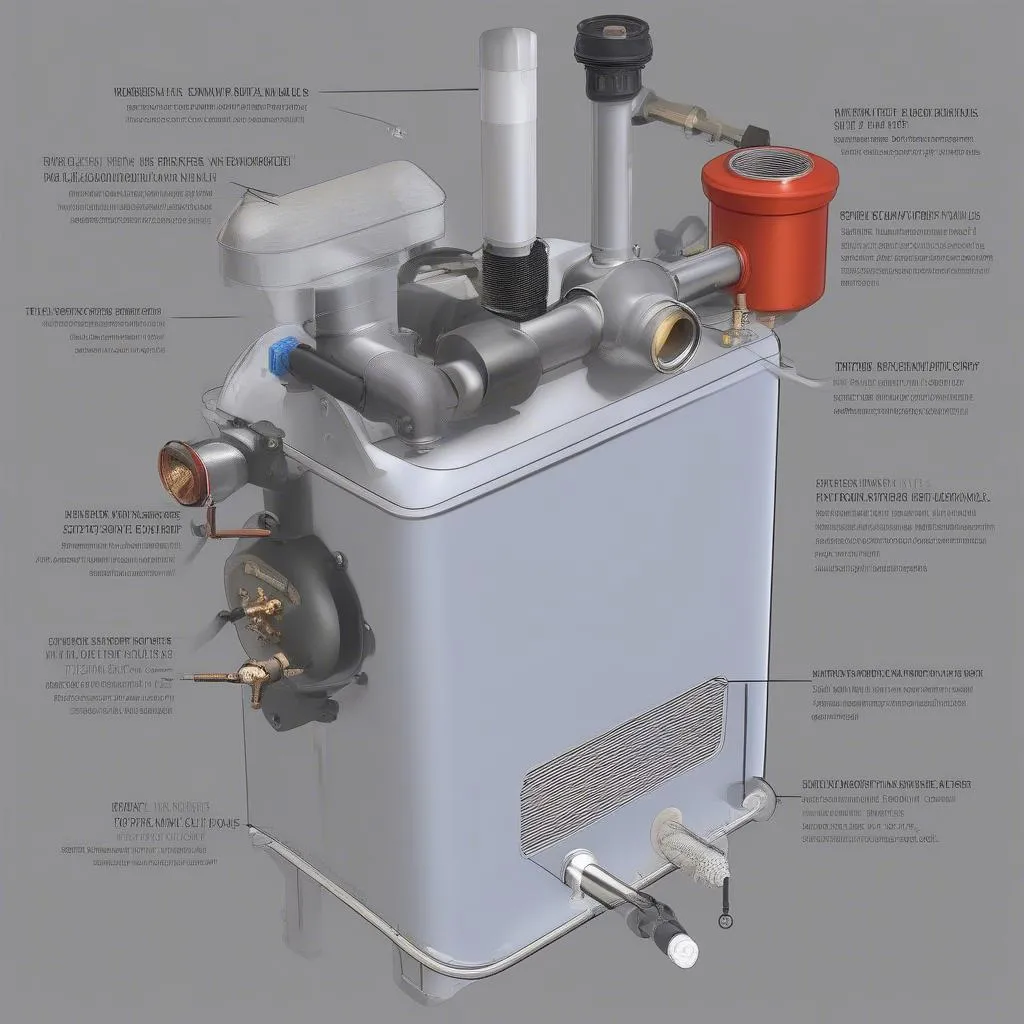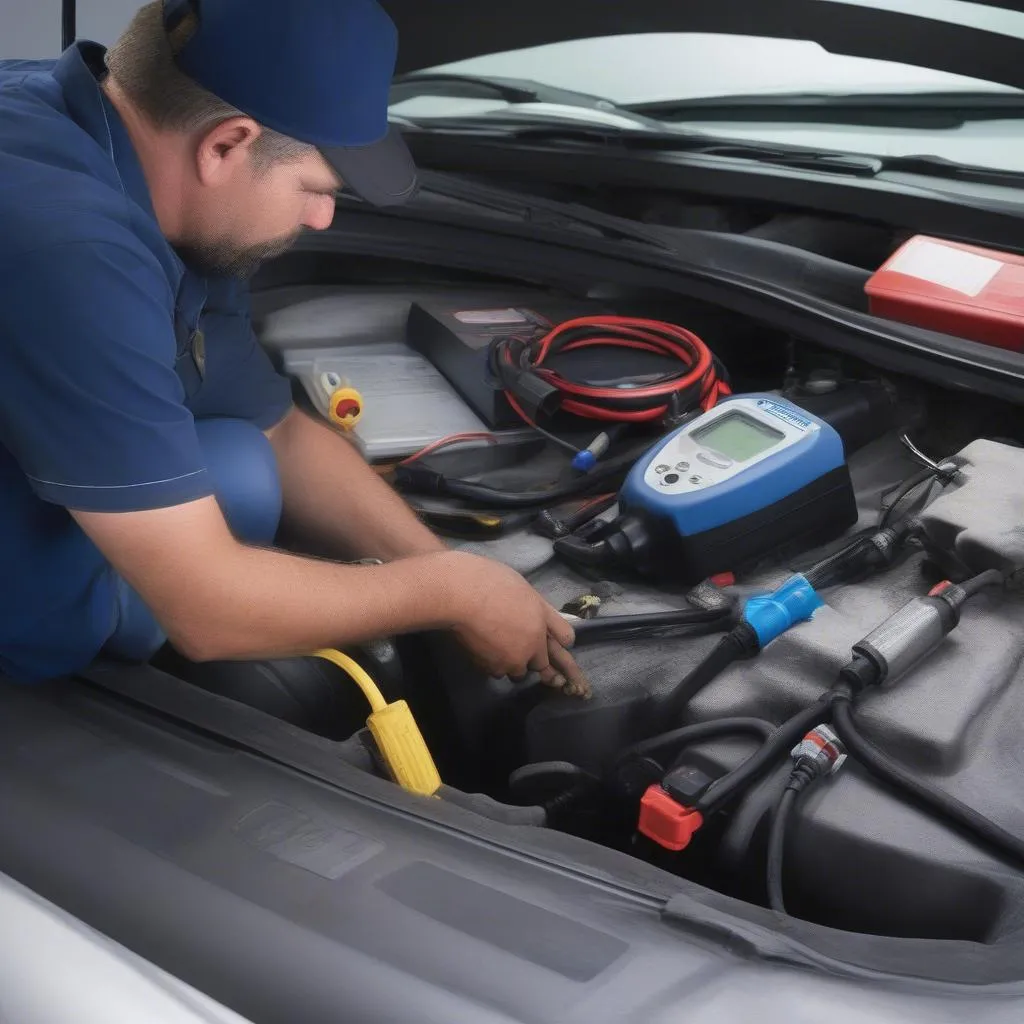Imagine this: you’re driving down the highway, enjoying the open road, when suddenly, your car’s check engine light illuminates. You pull over, check the engine, and everything seems fine. Then you remember that dreaded code: P0456. This code is associated with the evaporative emission control (EVAP) system, a critical component in reducing harmful emissions. But don’t worry, it’s not always a cause for panic. In this comprehensive guide, we’ll unravel the mystery behind code P0456, discuss potential causes, and equip you with the knowledge to troubleshoot and fix it yourself.
Understanding OBD II Code P0456: What Does It Mean?
OBD II code P0456 is a generic code that signifies a problem with the EVAP system’s “small leak” detection. The EVAP system captures gasoline vapors that evaporate from the fuel tank and directs them to be burned in the engine, minimizing harmful emissions.
From a Mechanic’s Perspective:
As a mechanic, code P0456 indicates a leak somewhere in the EVAP system, preventing the system from properly controlling emissions. It’s crucial to diagnose and fix the leak promptly, ensuring the car meets emissions standards and operates efficiently.
From a Technical Perspective:
The EVAP system is composed of several components: the fuel tank, the canister, the purge valve, the vent valve, and the charcoal filter. The EVAP system relies on a pressure sensor to detect any changes in pressure within the fuel tank. When the system detects a leak, it triggers the “small leak” detection mechanism, leading to code P0456.
From an Economic Perspective:
Ignoring code P0456 can be costly. Not only can it lead to higher emissions and fuel consumption, but it can also result in failing emission tests and potential fines in some jurisdictions.
The Causes of OBD II Code P0456: Uncovering the Leak
Now that you understand the meaning of code P0456, let’s dive into the common culprits behind it.
1. Loose or Damaged Fuel Cap:
This is the most frequent culprit. A loose or damaged fuel cap allows fuel vapors to escape, triggering the “small leak” detection.
2. Leaky EVAP System Components:
A crack in the fuel tank, a worn-out hose, a faulty purge valve, or a damaged vent valve can all lead to leaks in the system, resulting in code P0456.
3. Defective EVAP System Pressure Sensor:
A faulty sensor may register false readings, incorrectly detecting a leak.
How To Fix Obd Ii Code P0456: A Step-by-Step Guide
Now that you know the potential causes, let’s get down to fixing the issue.
Step 1: Tighten the Fuel Cap
This is the first and easiest step. Make sure the fuel cap is securely fastened and doesn’t have any cracks or damage.
Step 2: Inspect for Visual Leaks
Visually inspect the EVAP system components, including the fuel tank, hoses, purge valve, and vent valve. Look for any cracks, tears, or loose connections. If you see any obvious leaks, replace the damaged components.
Step 3: Use an EVAP Leak Detection Pump
If you can’t find any visible leaks, you’ll need to use an EVAP leak detection pump. This device helps pinpoint leaks by pressurizing the EVAP system and observing any pressure drops.
Step 4: Check the EVAP System Pressure Sensor
If you’ve eliminated leaks from other components, a faulty pressure sensor could be the culprit. Use a scan tool to check the sensor’s readings and replace it if necessary.
Common Questions About OBD II Code P0456
1. Can I drive with code P0456?
While code P0456 may not prevent your car from running, it’s not advisable to drive with it for prolonged periods. The leak can worsen over time, leading to more significant damage.
2. What if I can’t find the leak?
If you’ve checked the fuel cap, visually inspected the system, and used a leak detection pump but still can’t find the culprit, it’s best to take your car to a qualified mechanic.
3. Can I clear the code myself?
Yes, you can clear the code using a scan tool. However, simply clearing the code won’t fix the underlying problem.
4. What are the consequences of ignoring code P0456?
Ignoring this code can lead to increased emissions, fuel consumption, and potentially even a failed emissions test.
Related Content:
Get Expert Help with Code P0456
Need expert advice? Our team of certified technicians are ready to help you troubleshoot and fix code P0456. Contact us via WhatsApp at +84767531508 for 24/7 support.
 EVAP System Components
EVAP System Components
 EVAP System Leak Detection
EVAP System Leak Detection
Conclusion:
Code P0456 can be a frustrating experience, but with the right knowledge and tools, you can often diagnose and fix it yourself. Remember to always check the fuel cap first, then visually inspect the EVAP system components. If you can’t find the leak, don’t hesitate to seek professional help. By addressing this code promptly, you can ensure your car runs smoothly, meets emission standards, and saves you money in the long run.